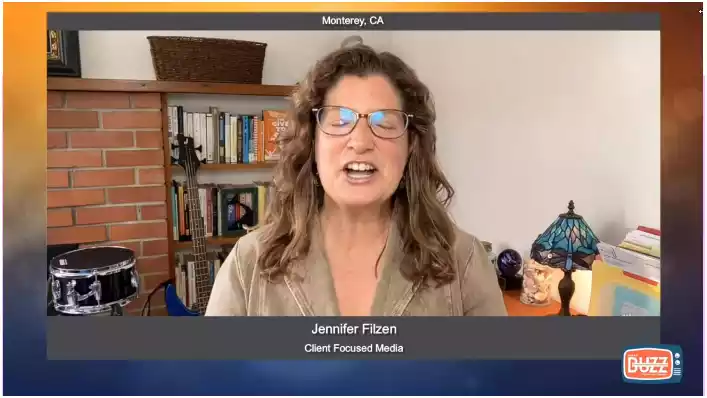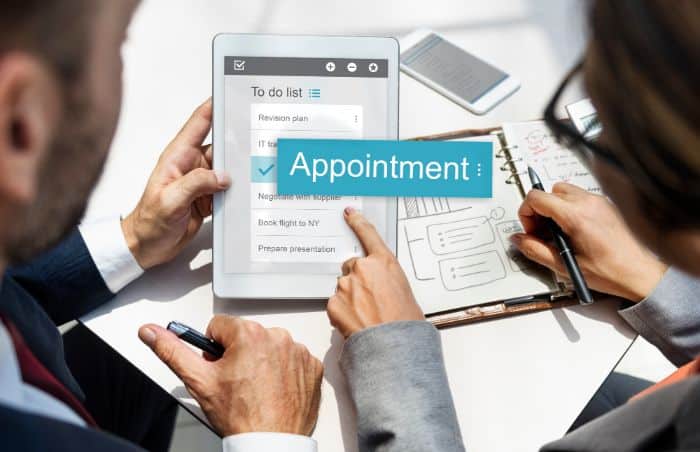Strategic Planning for Prior Authorization Tips & Tricks
Unlock the secret to a smoother, faster prior authorization process! Dive into our strategic planning for prior authorization insights and say goodbye to delays and headaches.

Understanding what is a prior authorization is fundamental. Prior authorization involves the process of seeking approval from insurance companies or healthcare providers before specific medical treatments, procedures, or medications can be covered or prescribed. This step is crucial for managing healthcare costs and ensuring that resources are utilized appropriately. Familiarizing oneself with the intricacies of prior authorization is vital for both patients and healthcare providers to ensure timely access to necessary care while adhering to insurance requirements. Let’s explore the intricacies of what is a prior authorization and equip ourselves with the knowledge needed to navigate this aspect of healthcare effectively.
Start now!
Table of Contents
A Practitioner’s Guide to Strategic Prior Authorization Planning

This guide aims to streamline operations, reduce administrative burdens, and ultimately enhance patient care by equipping medical professionals with the knowledge and tools necessary to navigate prior authorizations efficiently. By diving into the intricacies of authorization policies and shedding light on best practices, this handbook is an essential resource for any practitioner of medicine looking to streamline their prior authorization process. By providing a thorough and useful approach, this guide enables practitioners to proactively handle prior authorizations, improving patient outcomes and streamlining the healthcare system.
What Is Prior Authorization and Why Is It a Critical Aspect of Healthcare Practice?
Prior authorization is a health insurance procedure through which medical professionals need to get a patient’s health insurance approval company before proceeding with a specific service, treatment, or prescription medication. This step is critical because it ensures that the proposed medical services are covered under the patient’s health plan, are medically necessary, and are not redundant with other procedures or tests already received. It acts as a checkpoint to control healthcare costs and prevent overuse of resources, which can lead to increased patient premiums.
Additionally, prior authorization helps to ensure that the treatment plan is appropriate and aligns with evidence-based practices, improving patient outcomes and quality of care. It also ensures that patients are not prescribed unnecessary or potentially harmful treatments or medications, saving them from potential harm and unnecessary medical costs. In summary, prior authorization is vital in guaranteeing the efficient and successful delivery of healthcare services while protecting patients’ interests. So, it is a critical aspect of healthcare practice that benefits patients and healthcare providers alike.
Understanding Prior Authorizations
Prior authorizations are an essential part of the healthcare process that requires providers to obtain approval from insurance companies before administering certain procedures or treatments. These requests for authorization are typically required for expensive, elective, or potentially harmful procedures and treatments. They are intended to ensure that the requested treatment is medically necessary and cost-effective for the patient’s condition.
Prior authorizations have become increasingly prevalent in recent years as a means for insurance companies to control costs and manage the utilization of healthcare services. However, this process can often be confusing and time-consuming for practitioners, leading to frustration and burnout. By understanding the fundamentals of prior authorizations, providers can better navigate this process and improve patient outcomes.
The Impact of Poor Prior Authorization Management
Failure to effectively manage prior authorizations can have significant consequences for patients and healthcare providers. For patients, delays in receiving necessary treatments or medications due to denied authorizations can result in worsened health conditions and increased costs. The administrative burden and potential financial losses from denied authorizations can lead to increased stress and decreased job satisfaction for providers.
In addition to these immediate effects, poor prior authorization management can have long-term implications for healthcare systems. As more time and resources are spent on navigating the complexities of prior authorizations, less focus is placed on patient care and overall efficiency. This can create bottlenecks in the healthcare system and lead to delays in treatment, increased costs, and decreased patient satisfaction.
The Importance of Strategic Planning
To effectively manage prior authorizations, practitioners must be proactive and strategic. This involves understanding insurance policies and requirements and developing processes for timely submission and follow-up on authorization requests. Healthcare providers can mitigate the negative effects of denied requests and improve overall efficiency by implementing a strategic plan for prior authorization management.
A key component of strategic planning is staying up-to-date on changes in insurance policies and requirements. As these regulations are constantly evolving, it is crucial for practitioners to regularly review and adjust their approach to ensure compliance and optimize success rates for authorization requests.
I'm very thankful for Portiva who I know is looking after my practice while I'm gone the virtual assistants can manage prescription refills, documents they can triage patients and just kind of answer administrative questions and they can handle a lot on their own. But also, they're very good about contacting me if there's any emergency or anything I need to attend to. So I'm very thankful for Portiva they can help almost any provider almost anywhere and it really allows for some good work-life balance as I'm getting to experience right now at my family farm so I'm very thankful for Portiva and I'm very happy to use their services"

Board Certified Family Medicine Physician

Portiva's Virtual Medical Assistant - I have all the support I need. There's somebody checking my email, any patient messages. Patients are still able to schedule and handle any scheduling issues and any kind of billing that needs to still go through. Portiva hands handles it all for me. I have support i have somebody that I can access 24/7 pretty much. It's all very seamless. If somebody has an emergency or needs a medication called in. I know that the va's at portiva will handle that for me.

Board Certified Family Medicine Physician

How Can Practitioners Develop an Effective Prior Authorization Strategy?
To develop an effective prior authorization strategy, medical practitioners should establish a dedicated team that understands the complexities of insurance policies and keeps abreast of ever-changing requirements. This team should implement a structured process that includes verifying patient coverage before services are rendered, using electronic health record (EHR) systems to streamline information gathering, and maintaining open communication channels with insurance companies to expedite approvals. Staying updated on policy alterations and training staff on new regulations is crucial.
Additionally, leveraging technology such as electronic prior authorization (ePA) tools can significantly reduce manual errors and wait times. Collaboration between providers, administrative staff, and pharmacists is essential to identify bottlenecks and optimize workflows, ensuring patients receive the necessary care without undue delay.
What are the common challenges of prior authorization, and how do we overcome them?
Prior authorization, essential in the healthcare system for confirming coverage by insurance companies, presents several challenges that can impede the delivery of timely patient care. One significant challenge is the complexity and variability of the authorization process between different insurers, which can result in confusion and delays. Additionally, a substantial administrative workload is imposed on healthcare providers, who often juggle between patient care and managing cumbersome paperwork. Errors in submissions can lead to denials or further delays, exacerbating patient frustration. To overcome these hurdles, healthcare organizations can leverage technology like electronic prior authorization (ePA) solutions to streamline submissions, reduce errors, and expedite the approval process. Emphasizing staff training on the specific requirements of various insurers and employing dedicated staff or outsourcing to handle the prior authorization workload can also significantly reduce bottlenecks, ensuring that patients receive their treatments without unnecessary wait times.
Conclusion
Prior authorizations are an integral part of the healthcare process, and effective management is essential for patient care and providers’ financial stability. By understanding the fundamentals of prior authorizations, recognizing the impact of poor management, and implementing strategic planning techniques, practitioners can easily navigate this complex process and ultimately improve patient outcomes. “A Practitioner’s Guide to Strategic Prior Authorization Planning” is an important tool for healthcare professionals who want to simplify their processes and improve their approach. Practitioners can guarantee that patients receive the required care in a timely and economical manner by devoting time and effort to comprehend prior authorizations, ultimately resulting in a more efficient healthcare system.
Therefore, this guide can be advantageous for specific practitioners and the healthcare sector as a whole. As the healthcare industry develops further, maintaining informed and proactive on prior authorizations will remain crucial for practitioners seeking to provide the best possible care for their patients. Thus, “A Practitioner’s Guide to Strategic Prior Authorization Planning” is an invaluable tool for any healthcare provider looking to navigate this complex process successfully.
To learn more about prescription approval that can enhance your medical practice. Discover more about Portiva and unlock a world of possibilities by visiting our homepage today!
- Navigating prior authorization process
- Effects of prior authorization on healthcare
- Understanding the prior authorization
- How the prior authorization process works
- Dynamics of prior authorization rules
- Significance of prior authorization
- The essential role of prior authorization
- Advantages of healthcare prior authorization
- How to handle authorization denials
- Streamline prior authorization process
- Managing prior authorization
- Benefits of prior authorization software
- Operating authorization denials
- Simplify patient care with prior authorization
- Monitoring the prior authorization
- Healthcare prior authorization regulations
- Handling prior authorization rejections
- Prior authorization criteria
- Prior authorization limitations



